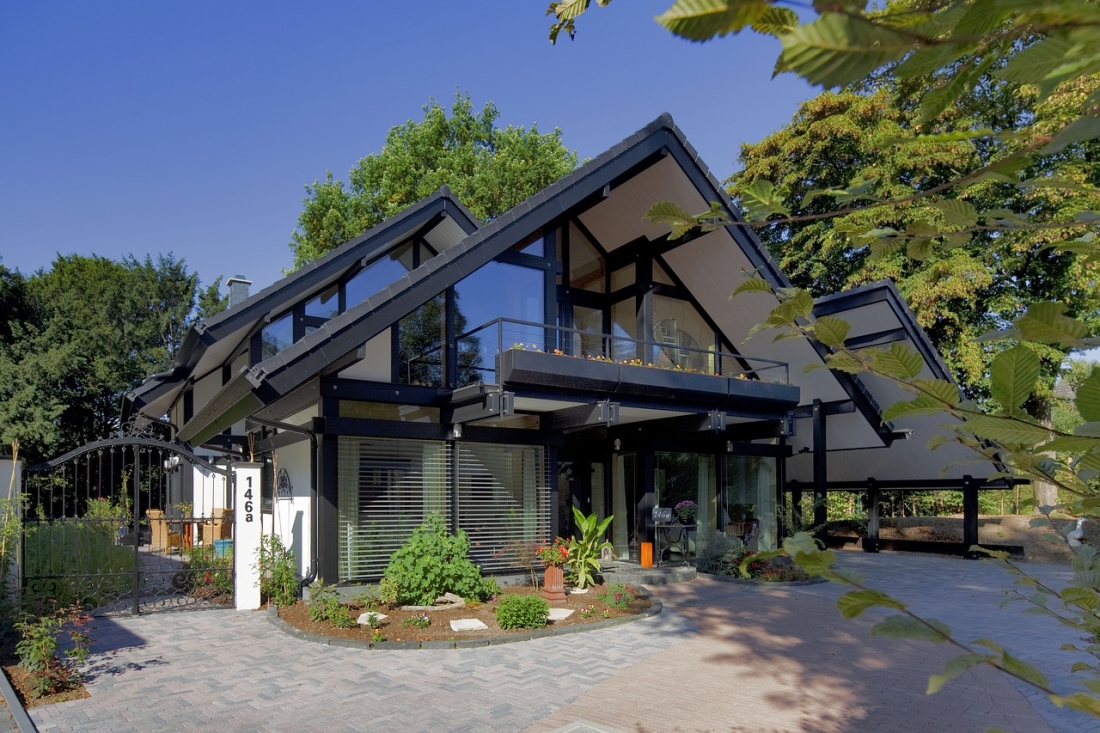Owning a home is an exciting milestone in life, but it comes with a host of responsibilities, including the ongoing maintenance and upkeep of your property. Budgeting for home maintenance is a crucial aspect of financial management for homeowners, particularly for Filipino homeowners who want to ensure the longevity and value of their investment.

In this comprehensive guide, we will explore the importance of budgeting for home maintenance in the Philippines and provide practical tips to help you manage your post home-buying finances effectively. From managing mortgage payments to building a homeowner safety net, we’ll delve into the key elements of financial planning for homeownership.
Additionally, we’ll highlight the significance of establishing an emergency fund and how it can safeguard your home against unexpected repairs and maintenance issues. By developing a solid budget and emergency fund, you’ll have the peace of mind and financial security to protect and maintain your home for years to come.
Assessing Home Maintenance Needs
Before diving into budgeting for home maintenance, it is essential to assess the specific needs of your home. By evaluating the condition of your property and identifying common maintenance requirements in the Philippines, you can better understand the scope and potential costs involved.
This proactive approach allows you to prioritize tasks effectively and allocate your budget wisely.
Evaluating the Condition of Your Home
Begin by conducting a thorough assessment of your home’s overall condition. Take note of any visible signs of wear and tear, such as cracks, leaks, or structural issues.
Inspect the roof, walls, foundation, electrical system, plumbing, and other essential components. It’s also important to consider the age of your home, as older properties may require more extensive maintenance.
Identifying Common Maintenance Requirements in the Philippines
Filipino homeowners face unique maintenance challenges due to the country’s climate and environmental factors. Identify common maintenance needs that are prevalent in the Philippines, such as humidity-related issues, pest control, mold prevention, and typhoon preparedness.
Research local building codes and regulations to ensure compliance and stay informed about specific maintenance requirements for your area.
By carefully assessing the maintenance needs of your home, you can gain valuable insights into the areas that require attention and prioritize your budget accordingly. This proactive approach helps you prevent potential issues from escalating into costly repairs and ensures that your home remains in optimal condition.
Setting a Realistic Maintenance Budget
Once you have assessed the maintenance needs of your home, it’s time to establish a realistic budget that aligns with your financial capacity. Setting a well-planned maintenance budget ensures that you have the necessary funds to address routine upkeep and tackle unforeseen repairs without straining your finances.
Determining Your Financial Capacity
Begin by evaluating your income, expenses, and overall financial situation. Take into account your monthly household budget, including mortgage payments, utilities, insurance, and other recurring expenses.
Assess your disposable income and consider how much you can comfortably allocate towards home maintenance without compromising your financial stability.
Factors to Consider When Budgeting for Home Maintenance
When setting your maintenance budget, there are several important factors to consider. First, estimate the average annual maintenance costs based on the size, age, and condition of your home.
Take into account potential repair and replacement expenses for major components such as the roof, HVAC system, plumbing, and appliances. Additionally, factor in the specific maintenance requirements for your location, such as pest control or weather-related precautions.
It’s also advisable to include an allocation for unexpected emergencies. While you’ll strive to have a separate emergency fund (which we will discuss later), it’s prudent to have a contingency within your maintenance budget for unforeseen repairs that may arise.
By taking a realistic approach to setting your maintenance budget, you can ensure that you have adequate funds to address both routine and unexpected maintenance needs. This proactive financial planning will provide you with the peace of mind and financial stability to effectively care for your home in the long run.
Prioritizing Maintenance Tasks

After assessing your home’s maintenance needs and setting a realistic budget, the next step is to prioritize the various tasks based on their urgency and importance. Prioritizing maintenance tasks ensures that you address critical issues promptly and allocate your resources effectively.
Categorizing Maintenance Tasks Based on Urgency
Start by categorizing the maintenance tasks into three main categories: urgent, important, and optional. Urgent tasks are those that require immediate attention to prevent further damage or safety hazards.
These could include fixing a leaking roof, repairing electrical issues, or addressing plumbing emergencies.
Important tasks are necessary for maintaining the overall condition and functionality of your home, but they may not have an immediate impact on safety or structural integrity. Examples include routine HVAC maintenance, gutter cleaning, or addressing minor repairs and maintenance.
Optional tasks are enhancements or upgrades that are not urgent or essential for the immediate well-being of your home. These could include cosmetic improvements or renovations that you can plan for in the future.
Understanding the Impact of Deferred Maintenance
It’s crucial to recognize the potential consequences of deferring maintenance tasks. Delaying necessary repairs or neglecting routine maintenance can lead to more significant problems down the line, resulting in higher costs and potential safety risks.
Regularly review your prioritized list and ensure that urgent and important tasks are addressed in a timely manner.
By prioritizing maintenance tasks, you can focus your resources on addressing critical issues first while planning and budgeting for less immediate tasks. This approach allows you to effectively maintain the integrity of your home and prevent small problems from escalating into more significant and costly repairs.
Creating a Home Maintenance Calendar
To stay organized and ensure timely upkeep of your home, it’s essential to develop a home maintenance calendar. This calendar will serve as a valuable tool for scheduling routine maintenance activities, tracking important dates, and staying on top of inspections and repairs.
Developing a Schedule for Routine Maintenance Activities
Identify the routine maintenance tasks that need to be performed regularly to keep your home in good condition. This may include tasks such as cleaning gutters, changing air filters, servicing HVAC systems, inspecting and sealing windows and doors, and checking for plumbing leaks.
Determine the recommended frequency for each task and create a schedule accordingly.
Tracking Important Dates and Deadlines for Inspections and Repairs
In addition to routine maintenance, your home may require periodic inspections or repairs. These could include professional inspections for termites, electrical systems, or annual servicing of appliances.
Mark these important dates on your maintenance calendar to ensure they are not overlooked or forgotten.
Furthermore, if you have identified specific maintenance needs during the assessment phase, such as roof repairs or repainting, note the recommended timeframes for addressing them. Incorporate these deadlines into your calendar to stay proactive and prevent delays that could lead to further damage.
Utilize digital calendars, reminder apps, or traditional paper calendars to keep track of your maintenance schedule. Set reminders to alert you in advance of upcoming tasks or appointments, ensuring that you stay on top of your home maintenance responsibilities.
By creating a comprehensive home maintenance calendar, you can establish a systematic approach to caring for your home. This proactive scheduling and tracking system will help you stay organized, prevent maintenance tasks from slipping through the cracks, and ultimately contribute to the longevity and value of your property.
Researching Home Maintenance Costs

To effectively budget for home maintenance, it’s crucial to have a clear understanding of the average costs associated with various maintenance tasks. By conducting thorough research, you can gather valuable information on expenses, identify cost-saving strategies, and make informed decisions about allocating your budget.
Gathering Information on Average Maintenance Expenses
Start by researching the average costs of common maintenance tasks specific to the Philippines. Consult reputable sources, online resources, and local service providers to get accurate estimates.
Consider factors such as the size of your home, the complexity of the task, and the materials required when assessing costs.
Additionally, reach out to fellow homeowners or join local homeowner associations to gain insights from their experiences. They can provide valuable information on typical maintenance costs in your area and recommend reliable contractors or service providers.
Utilizing Cost-Saving Strategies and Alternatives
While some maintenance tasks may require professional assistance, there may be opportunities to save costs through alternative approaches. Research do-it-yourself (DIY) options for simpler tasks that you are comfortable handling.
However, exercise caution and ensure that you have the necessary skills and knowledge to carry out the task effectively and safely.
Furthermore, explore cost-saving strategies such as comparing prices from multiple suppliers, negotiating service fees, or taking advantage of discounts or promotions. Consider long-term cost-effectiveness when choosing materials or equipment, opting for energy-efficient solutions that can help save on utility bills.
By thoroughly researching home maintenance costs and exploring cost-saving strategies, you can make informed decisions about budget allocation. This knowledge empowers you to prioritize tasks based on their impact and cost, ultimately maximizing the efficiency of your maintenance budget.
Seeking Professional Help
While some home maintenance tasks can be handled through DIY efforts, there are instances where seeking professional help is necessary. Knowing when to enlist the expertise of qualified contractors or service providers is crucial for ensuring the proper care and maintenance of your home.
Identifying Reliable and Qualified Contractors in the Philippines
Research and identify reputable contractors or service providers who specialize in the specific maintenance tasks you require. Seek recommendations from trusted sources such as friends, family, or neighbors who have had positive experiences with professionals in the past.
Read online reviews and check their credentials, licenses, and insurance coverage to ensure they meet the necessary standards.
Understanding When Professional Assistance is Necessary
Certain maintenance tasks should always be entrusted to professionals due to their complexity, safety concerns, or legal requirements. Examples include electrical work, major plumbing repairs, structural assessments, or handling hazardous materials.
Hiring professionals ensures that the work is done correctly, minimizing the risk of accidents or further damage to your home.
Additionally, professional help may be required when dealing with specialized maintenance needs specific to the Philippines, such as termite control, typhoon-proofing, or implementing effective moisture management systems. These tasks often require specialized knowledge and equipment that professionals can provide.
By recognizing when professional assistance is necessary, you can avoid potential pitfalls and ensure that your home receives the expert care it deserves. Collaborating with qualified professionals not only saves you time and effort but also provides you with peace of mind knowing that the maintenance tasks are being handled by experienced professionals who adhere to industry standards.
Remember to obtain multiple quotes from different professionals, compare their expertise and pricing, and make an informed decision based on a combination of reputation, qualifications, and affordability.
DIY Home Maintenance

While seeking professional help is important for certain tasks, there are numerous basic home maintenance tasks that homeowners can tackle themselves. Taking a do-it-yourself (DIY) approach not only allows you to save on labor costs but also empowers you to actively contribute to the upkeep of your home.
However, it’s essential to prioritize safety and acquire the necessary skills and knowledge before attempting any DIY maintenance tasks.
Basic Home Maintenance Tasks Homeowners Can Do Themselves
Many routine maintenance tasks can be successfully accomplished by homeowners with the right tools and guidance. These tasks may include:
Cleaning and maintaining gutters and downspouts to prevent clogs and water damage.
Regularly replacing air filters to ensure proper HVAC system function and indoor air quality.
Caulking and sealing windows and doors to enhance energy efficiency and prevent drafts.
Painting and touch-ups to refresh and protect interior and exterior surfaces.
Performing simple plumbing maintenance, such as fixing minor leaks or unclogging drains.
Installing weatherstripping to improve insulation and reduce energy consumption.
Conducting regular cleaning and maintenance of appliances, such as refrigerators, ovens, and washing machines.
Ensuring Safety and Acquiring Necessary Skills for DIY Maintenance
Before embarking on any DIY maintenance tasks, prioritize safety by familiarizing yourself with the necessary safety precautions and using appropriate protective gear. It’s crucial to read and follow instructions carefully, use tools correctly, and exercise caution to avoid accidents or damage to your home.
Acquire the skills and knowledge required for each task by referring to reliable sources such as instructional videos, guides, or workshops. Online resources, DIY forums, or community workshops can provide valuable guidance and tips for successfully completing DIY projects.
However, it’s important to recognize your limitations and know when a task exceeds your expertise. For complex or potentially hazardous tasks, it’s best to enlist the help of professionals to ensure the work is done correctly and safely.
By incorporating DIY home maintenance into your routine, you can actively contribute to the care and maintenance of your home while saving on labor costs. Just remember to prioritize safety, acquire the necessary skills, and seek professional help when needed to maintain the overall integrity and safety of your home.
Building an Emergency Fund

Building an emergency fund is a crucial aspect of financial planning for homeowners. Unexpected repairs or maintenance issues can arise at any time, and having a dedicated fund specifically for these emergencies provides a safety net and financial peace of mind.
Importance of Having Funds for Unexpected Repairs
Homeownership comes with the potential for unforeseen expenses, such as a sudden roof leak, a malfunctioning HVAC system, or a burst pipe. These unexpected repairs can be costly and disrupt your budget if you’re unprepared.
Having an emergency fund allows you to address these issues promptly without resorting to high-interest loans or putting a strain on your finances.
Strategies to Save for Emergencies and Unforeseen Maintenance Issues
Establish a savings goal: Determine how much you would like to save in your emergency fund. Aim for at least three to six months’ worth of living expenses as a general guideline.
Create a separate account: Open a dedicated savings account specifically for your emergency fund. This separation helps you avoid dipping into the funds for non-emergency purposes.
Automate savings: Set up automatic transfers from your main account to your emergency fund on a regular basis. This ensures consistency and helps you make saving a habit.
Trim unnecessary expenses: Review your monthly expenses and identify areas where you can cut back. Redirect those savings towards your emergency fund.
Prioritize the fund: Treat your emergency fund as a priority. Make it a non-negotiable part of your budget and savings plan.
Build gradually: It’s okay to start small and gradually increase your contributions over time. The key is to consistently save and build up your emergency fund.
By building an emergency fund, you create a financial safety net that protects you from unexpected repairs or maintenance costs. It provides peace of mind and ensures that you can handle emergencies without jeopardizing your financial stability or resorting to debt.
Prioritize saving for emergencies as part of your overall financial plan for homeownership.
Monitoring and Adjusting Your Budget
Creating a budget for home maintenance is not a one-time task; it requires ongoing monitoring and adjustments to ensure its effectiveness and alignment with your evolving needs. Regularly reviewing and adapting your budget allows you to stay proactive in managing your home maintenance expenses and make necessary changes as circumstances change.
Regularly Reviewing Your Home Maintenance Budget
Set aside time periodically to review your home maintenance budget. Assess your actual expenses and compare them to the budgeted amounts.
Identify any discrepancies or areas where you may be overspending or underspending. This review will provide insights into whether your budget is realistic and if adjustments are needed.
Adapting to Changing Needs and Circumstances
As time goes on, your home maintenance needs and circumstances may change. Factors such as aging infrastructure, changes in family size, or environmental conditions can influence your maintenance requirements and associated costs.
Stay attuned to these changes and be prepared to adjust your budget accordingly.
Consider seeking quotes or estimates from contractors or service providers when you anticipate upcoming maintenance or repair projects. This information can help you fine-tune your budget and make informed decisions about allocating your resources.
Additionally, be open to exploring cost-saving opportunities, such as energy-efficient upgrades or preventive maintenance measures. These initiatives can help reduce long-term costs and make your budget more sustainable.
By regularly monitoring and adjusting your home maintenance budget, you can ensure that it remains aligned with your needs and financial capabilities. This proactive approach allows you to optimize your resources, address maintenance needs promptly, and maintain the value and condition of your home effectively.
To Wrap Things Up
Budgeting for home maintenance is a vital aspect of financial management for Filipino homeowners. By following the guidelines and strategies outlined in this comprehensive guide, you can effectively plan, allocate resources, and ensure the long-term care and value of your property.
We have explored the importance of assessing home maintenance needs, setting a realistic budget, prioritizing tasks, creating a maintenance calendar, researching costs, seeking professional help when necessary, incorporating DIY maintenance, and building an emergency fund. These steps empower you to take control of your home’s maintenance, enhance its longevity, and protect your investment.
Remember to regularly monitor and adjust your budget, staying attuned to changing needs and circumstances. By adapting to evolving requirements, you can optimize your resources, address maintenance issues promptly, and maintain the overall integrity of your home.
Take pride in your role as a homeowner and prioritize the financial well-being of your property. By planning and budgeting for home maintenance, you not only ensure a safe and comfortable living environment but also protect your investment for years to come.
Start implementing these budgeting strategies today and enjoy the benefits of a well-maintained home that brings you joy, peace of mind, and financial stability. Your home is more than just a dwelling—it’s a place to create lasting memories and a sanctuary to cherish.






